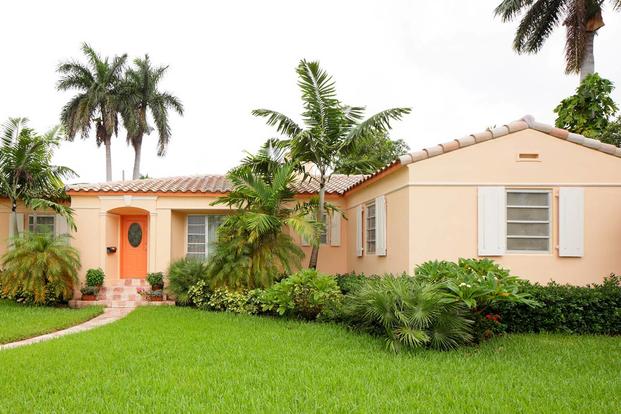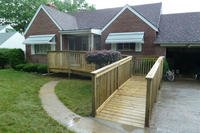(Updated May 2019)
Rising home prices continue to drive up the VA baseline loan limits.
Understanding The Baseline VA Loan Limit
Veterans may qualify for slightly more expensive houses using their down payment benefit in 2018. This week, the Veteran’s Administration announced that the baseline loan limit would increase.
Higher limits are in line with rising home prices. Effective January 1, the limit for single-family properties in most areas is $484,350. This is up from $453,100, last year's limit.
VA loan limits represent the maximum amount that the VA will guarantee a lender. Loans over the limit generally require a Veteran to make a down payment. Some high-cost areas may have loan limits above the baseline.
Click here to see if your county is considered a high-cost area.
The baseline loan limit of $417,000 was set in the Housing and Economic Recovery Act of 2008 (HERA). Loan limits are intended to reflect ups and downs in home prices. In the 2008 housing crisis, home prices in the US took a tremendous hit. According to HERA, the baseline loan limit cannot go up until the average U.S. home price returns to its pre-crisis level.
High-Cost Ceiling for VA Loans Increased To $726,525
By definition, a high-cost area is one where the median home value is 115 percent over the baseline loan limit. Limits in these areas are set at the median home value up to a max of $726,525.
Special legislation changes the rules for Alaska, Hawaii, Guam and the U.S. Virgin Islands, and loan limits there may exceed $726,525 in some high-cost areas.
Higher VA Loan Limits Mean Home Prices Are Up
The average home price in third quarter of 2016 was 1.7 percent above the value for the third quarter of 2007 (pre-crisis), according to the Federal Housing Finance Administration (FHFA). For 2017, the baseline loan limit increased by the same percentage.
Home prices have been on a steady rise since the housing crash in 2008, according to the FHFA. In the third quarter, all but one state saw home prices increase from a year ago, according to the Housing Price Index (HPI).
- The five states with the most growth were Florida, Oregon, Washington, Colorado, and Utah
- The metro area with the largest increase was Tacoma-Lakewood, WA (MSAD), up 12.9 percent
- The metro area with weakest prices was New Haven-Milford, CT, down 1.7 percent
- The region with strongest growth was the South Atlantic, up 1.8 percent quarterly and 7.1 percent annually
- The region with weakest growth was New England, up 0.8 percent quarterly
Are New VA Loan Limits High Enough?
Numbers from the VA may suggest that flexible limits may be best for Veterans who want to buy in high-cost housing markets. In February of 2016, VA Loan Guaranty Service Director Mike Frueh told Congress that about 15,000 Veterans wanted to buy a home priced over the limit in 2015.
The number suggests that many Veterans cannot reap their full home loan benefits as they were intended.
Frueh also told lawmakers that about 90 percent of Veterans have purchased homes without a down payment since the program began. However, the percentage of zero-down-payment purchases has been going down year after year, according to the VA Annual Benefits Report.
For example, in San Jose the average home costs about $1,100,000. The ceiling 2017 loan limit for a VA guarantee is $726,525. That leaves the Veteran with $373,475 to secure with cash (25 percent of the difference between the limit and purchase price is typically required). Hypothetically, a Veteran would need to pay $93,368 in a cash down payment just to buy an average home.
Ready to Get Started?
If you're ready to get started, or just want to get more information on the process, the first step is to get multiple rate quotes with no obligation. You can then discuss qualifications, debt to income ratios, and any other concerns you have about the process with the lenders.










